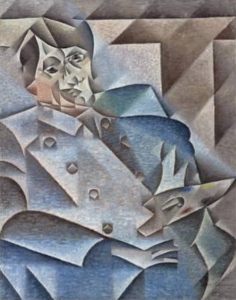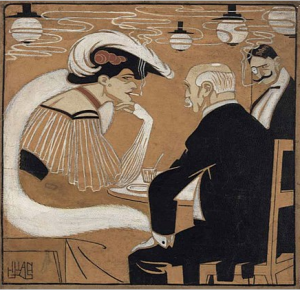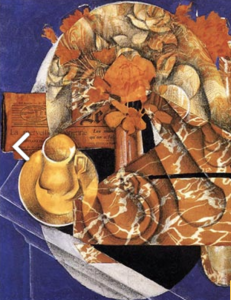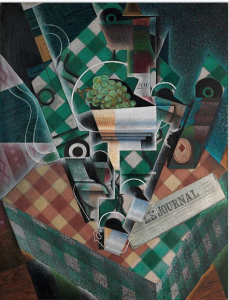Juan Gris (Cubism, Dadaism, & Surrealism)
Being one of the artists who participated in the early Cubism movement, the Spanish artist, Gris adopted the avant-garde style of Cubism established by fellow artists Pablo Picasso and Georges Braque. The main difference among the three is that while Picasso and Braque aimed to disrupt convention to create unorthodox, modern art, Gris focused on creating something that is aesthetically pleasing. Thus, Gris mainly stayed within the scope of Analytical Cubism; whereas Picasso and Braque took the flat graphic pattern to the extreme and developed Synthetic Cubism.

Portrait of Pablo Picasso by Juan Gris(1912)

Still Life with Flowers (1912)
While Picasso mostly experimented with harsh outlines, texture and a more Synthetic cubist style in his paintings, Juan Gris employed the Analytical cubist style in his works. Gris often used overlapping and sharp shapes with flat colours in his paintings. Despite that, there is also an evident gradient effect between shapes used to punctuate the transition like in his Still Life with Flowers (1912) and Portrait of Pablo Picasso (1912).

El 1 de mayo en el Kursall. published in the magazine ¡Alegría! (1907)

Flowers (1914). Gris incorporating collage elements, such as newspaper and wallpaper

Still Life with Checkered Tablecloth (1915)
I personally really admire Gris as an artist. While a lot of the artist we covered in the past mainly worked on commissioned paintings for patrons and art galleries, Gris worked as an illustrator for publication design. Thus, I think his cubist style with a touch of slick commercial design element to it is inspiring to many future designers including myself.

Recent Comments